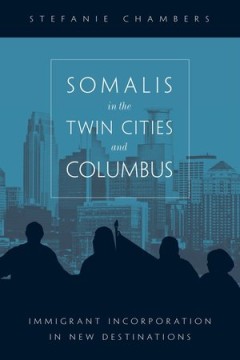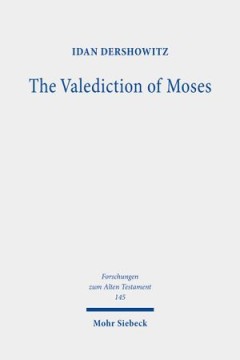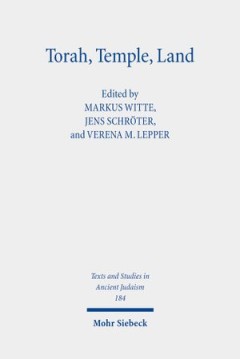Filter by

Crafting the 613 Commandments Maimonides on the Enumeration, Classification,…
Rabbinic tradition has it that 613 commandments were given to Moses on Mount Sinai, but it does not specify those included in the enumeration. Maimonides methodically and artfully crafts a list of 613 commandments in a work that serves as a prolegemenon to the Mishneh Torah, his monumental code of law. This book explores the surprising way Maimonides put this tradition to use and his possible r…
- Edition
- -
- ISBN/ISSN
- 9781618111678
- Collation
- -
- Series Title
- -
- Call Number
- -

The Codification of Jewish Law and an Introduction to the Jurisprudence of th…
The Mishna Berura is, without a doubt, Rabbi Israel Meir Kagan's greatest and most complex contribution to the canon of Orthodox Jewish Law; it is a singular work that synthesizes Jewish traditions, laws, and mores into a practical halakhic guide to daily religious life. For all of his traditionalism, Rabbi Kagan was an iconoclast, and the Mishna Berura broke from many of the traditional approa…
- Edition
- -
- ISBN/ISSN
- 9781618112781
- Collation
- -
- Series Title
- -
- Call Number
- -

Beyond Jewish Identity Rethinking Concepts and Imagining Alternatives
This volume, the first collection to examine critically the relationship between Jewish education and Jewish identity, makes two important interventions. First, it offers a critical assessment of the relationship between education and identity, arguing that the reification of identity has hampered much educational creativity in the pursuit of this goal, and that the nearly ubiquitous employment…
- Edition
- -
- ISBN/ISSN
- 9781644691281
- Collation
- -
- Series Title
- -
- Call Number
- -

Advancing the Learning Agenda in Jewish Education BOOK 2018 Advancing the …
Jewish educational projects and programs are thriving, attracting philanthropic support for exciting and creative approaches in every sector and setting. But underneath that energy, we are not as clear as we ought to be about desired outcomes, the kinds of learning needed to achieve these, and how those kinds of learning actually occur. This volume is the first of its kind to bring together sch…
- Edition
- -
- ISBN/ISSN
- 9781644692837
- Collation
- -
- Series Title
- -
- Call Number
- -

Somalis in the Twin Cities and Columbus: Immigrant Incorporation in New Desti…
Somalis in the Twin Cities and Columbus seeks to understand the integration outcomes of refugees in the Midwest at local and state levels to show how communities struggle with political, social, and economic incorporation. While many immigration titles examine the Latino community, this book focuses on the black Muslim Somalis, providing an important understanding of the lives of this understud…
- Edition
- -
- ISBN/ISSN
- 9781439914410
- Collation
- -
- Series Title
- -
- Call Number
- 300

The Valediction of Moses A Proto-Biblical Book
Moses Wilhelm Shapira's infamous Deuteronomy fragments - long believed to be forgeries - are authentic ancient manuscripts, and they are of far greater significance than ever imagined. The literary work that these manuscripts preserve - which Idan Dershowitz calls "The Valediction of Moses" or "V" - is not based on the book of Deuteronomy. On the contrary, V is a much earlier version of Deutero…
- Edition
- -
- ISBN/ISSN
- 9783161606458
- Collation
- -
- Series Title
- -
- Call Number
- -

Torah, Temple, Land Constructions of Judaism in Antiquity
The present volume contains the proceedings of a conference held in October 2018 at Humboldt University Berlin. The articles reflect the different categories of describing Judaism of the Second Temple Period in view of their sustainability in characterising an ancient religious community in different historical situations and discuss relevant (re)constructions of ancient Judaism in the history …
- Edition
- -
- ISBN/ISSN
- 9783161598548
- Collation
- -
- Series Title
- -
- Call Number
- -

Pyrrhonian Skepticism in Diogenes Laertius
This volume offers the first bilingual edition of a major text in the history of epistemology, Diogenes Laertius's report on Pyrrho and Timon in his Lives of Eminent Philosophers. Leading experts contribute a philosophical introduction, translation, commentary, and scholarly essays on the nature of Diogenes's report as well as core questions in recent research on skepticism.
- Edition
- -
- ISBN/ISSN
- 9783161533365
- Collation
- -
- Series Title
- -
- Call Number
- -

On Prophecy, Dreams and Human Imagination Synesius, De insommniis
Synesius' essay De insomniis ('On Dreams') inquires into the meaning and importance of dreams for human beings and treats themes - most of all the relationship of humans to higher spheres -, which for religiously- and philosophically-minded people are still important today.
- Edition
- -
- ISBN/ISSN
- 9783161524196
- Collation
- -
- Series Title
- -
- Call Number
- -

Companion to European Heritage Revivals
Are you organising an international heritage project? Turning a so-called 'heritage revival' into a meaningful experience for the general public can be a challenge to historians, archaeologists, museum conservators and tourism professionals alike.
- Edition
- -
- ISBN/ISSN
- 9783319077703
- Collation
- -
- Series Title
- -
- Call Number
- 301 EGB c
 Computer Science, Information & General Works
Computer Science, Information & General Works  Philosophy & Psychology
Philosophy & Psychology  Religion
Religion  Social Sciences
Social Sciences  Language
Language  Pure Science
Pure Science  Applied Sciences
Applied Sciences  Art & Recreation
Art & Recreation  Literature
Literature  History & Geography
History & Geography